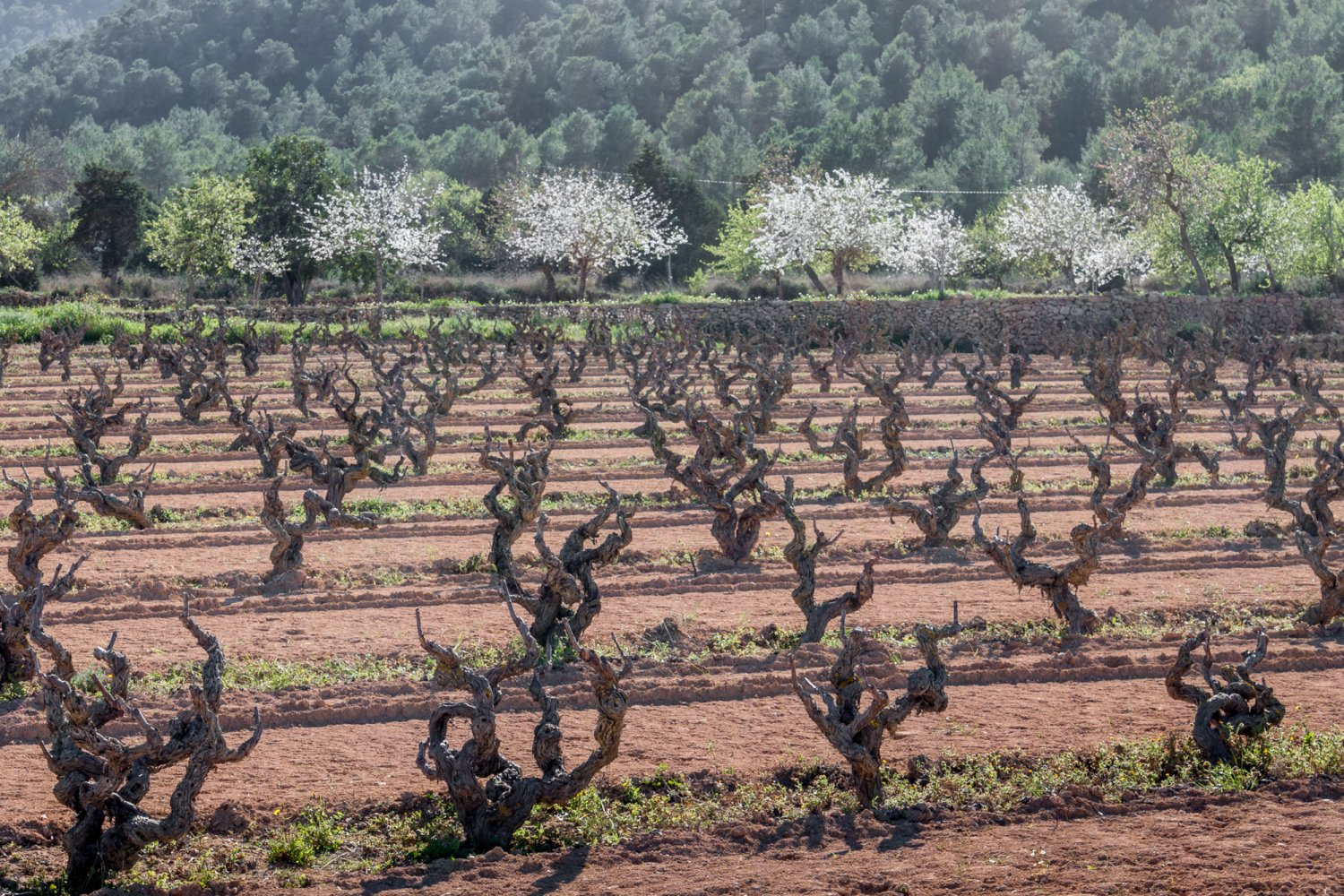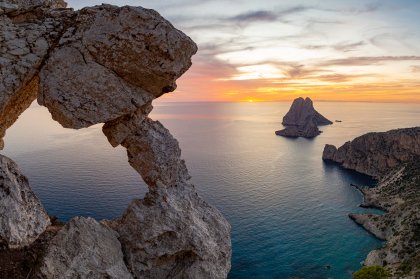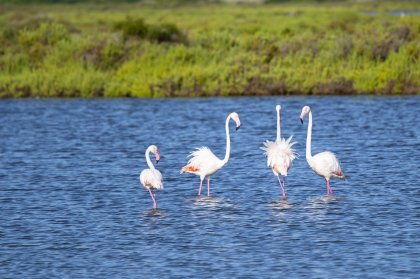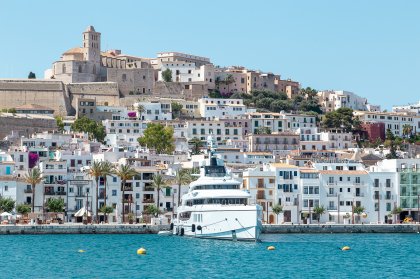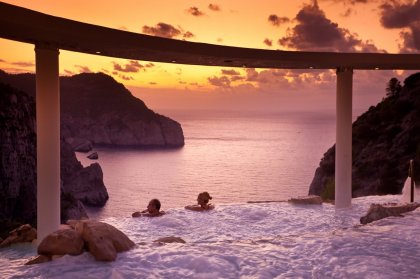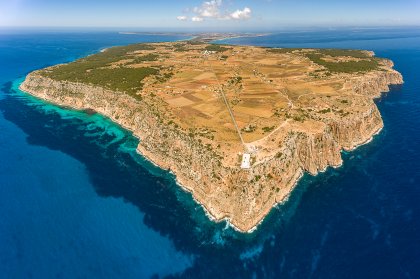It was around five million years ago that the Pitiusas (the name given to Ibiza and Formentera by the Greeks, translating as "the pine-covered islands") were separated from the mainland, and Ibiza's own unique vegetation and wildlife began to form.
A time of drastic shifts between extremely dry and wet climates followed, which eroded the mountains and hills, and at the same time formed rivers and lakes. The Pitiusas are completely composed of sedimentary rocks, so the valleys became filled with these nutritive sediments… for instance, Ibiza's fertile red earth is coloured by iron.
The isolation of the island has meant that agriculture is still often carried out the same way as it has been for centuries, without the use of artificial pesticides and fertilisers. Fields can lay fallow for many years, resulting in dazzling displays of beautiful wildflowers stretching over the countryside.
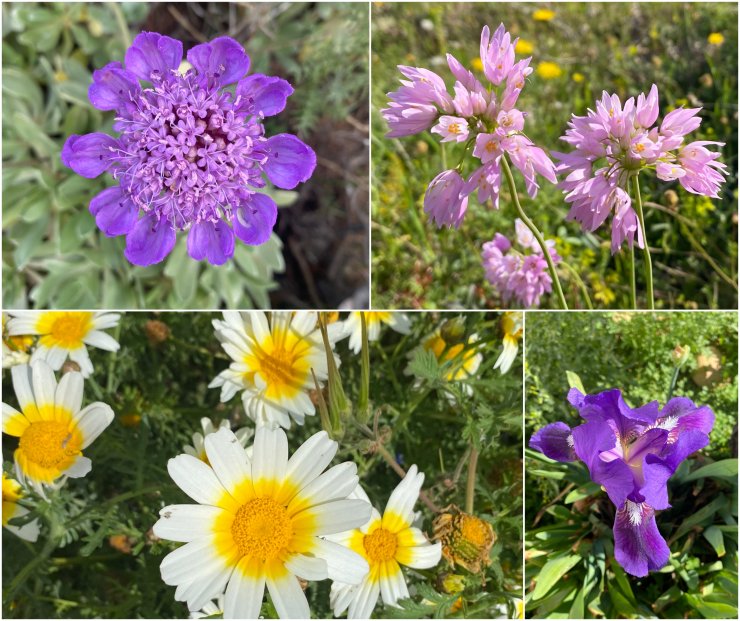
Even though Ibiza enjoys a warm and sunny climate, the island remains remarkably green all through the year, and this is mainly thanks to the dense pine-covered hills. But in addition to the pine forests, almond, olive and fig trees all add to the wonderfully green aura that surrounds Ibiza.
From July until September, bougainvillaea, oleander and hibiscus bushes adorn the island with startling splashes of purple, pink and red, and the warm temperatures between November and May see the almond trees in full bloom and the orange and lemon trees laden with succulent, ripe fruit.
Read more about the almond blossom in Ibiza in January or February.
The constant presence of palm trees, cacti and agaves (from which aloe vera is produced) ensures a tropical atmosphere all year long.
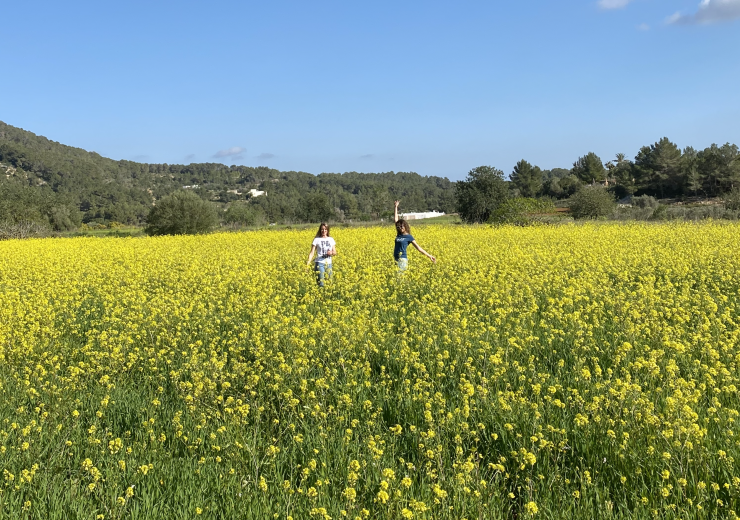
No article on Ibiza's vegetation would be complete without mention of the thousands of carob trees on the island. The pods from these trees traditionally provided one of the basic elements of food for farm animals, as well as revenue from the sale of carob seeds.
Farming has declined over the last thirty years, but it is still common to see families gathering together in the late summer and early autumn to pick carob and many people and organisations are working to revitalise carob production on Ibiza. Local shops and markets offer several products based on toasted carob syrup (which is rich in iron, potassium, calcium, and many other healthy nutrients). These include a coffee and cacao substitute, a cola-type drink, various sorbets, ice creams, puddings, cakes and sweets.
It is little wonder that many of the typical restaurants in Ibiza use this versatile fruit in their kitchens to make delicious sauces and desserts!

